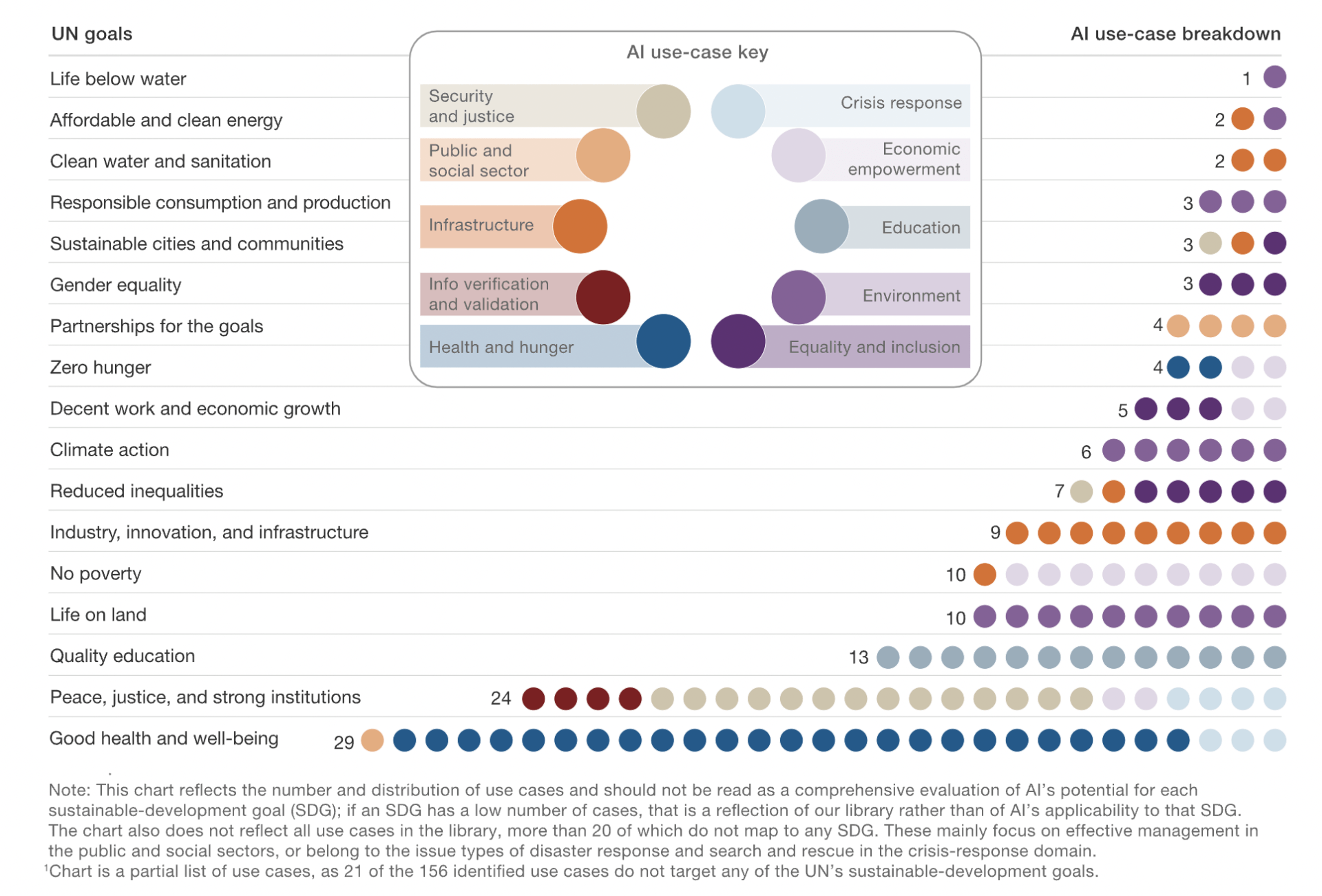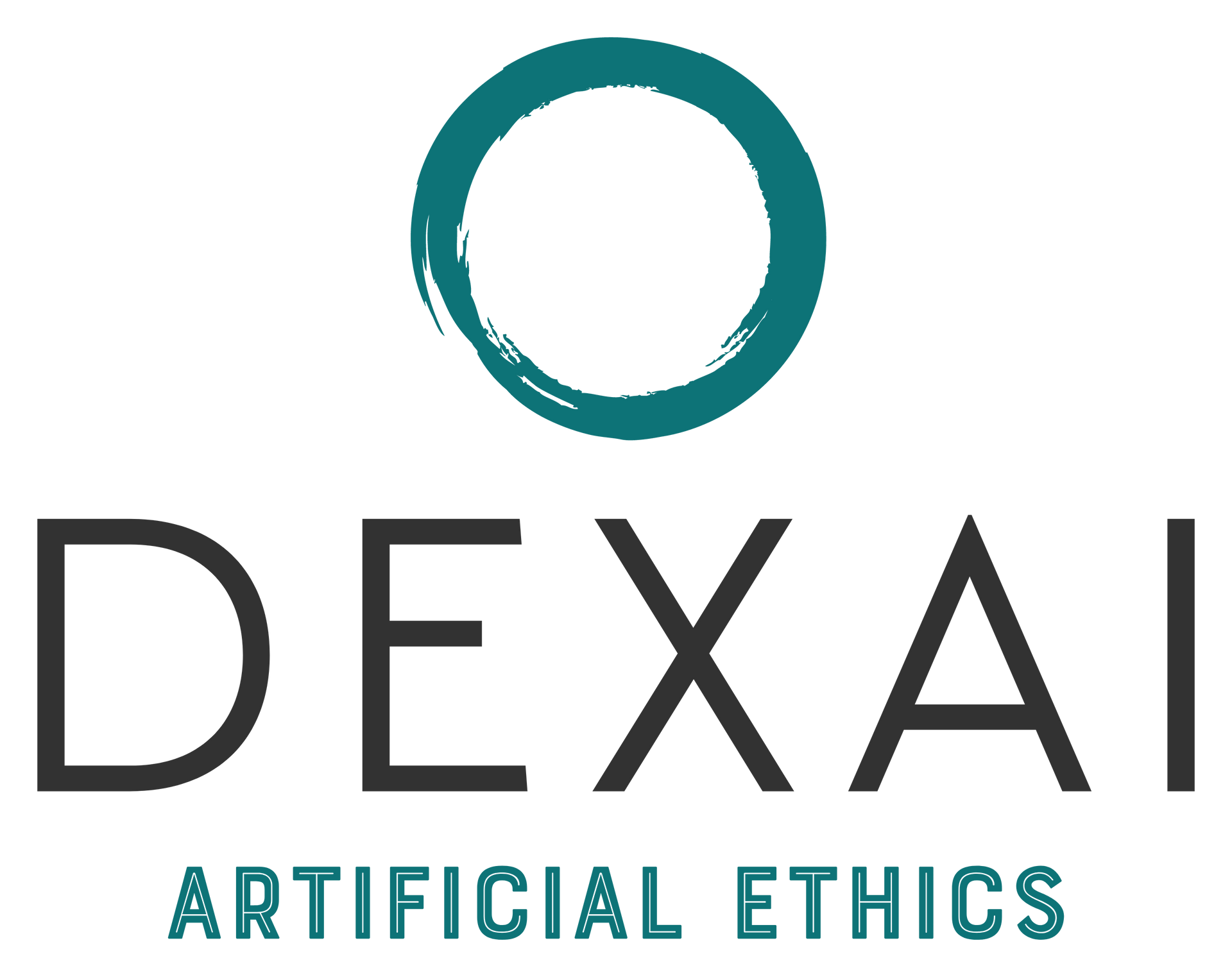AI - An enabler or inhibitor in delivering the 17 goals and 169 targets of UN’S Sustainable Goals?
Back in 2015, 17 UN Sustainable Development Goals (SDGs) and 169 targets internationally agreed upon were established by the United Nations (UN) to encourage sustainable development by addressing some of the most pressing economic and social issues humanity is facing.
Artificial intelligence (AI) systems have left a lot to say regarding their impact on society and the planet. As a result, attention is currently dedicated to carefully analyzing and evaluating these impacts. In this brief article, we suggest that while AI has a positive potential to enable these goals (i.e., increasing productivity, reducing production costs, reducing environmental impacts by dematerializing production, improving market functioning, et), (Corea et al., 2022) it also has socio-economical and ethical repercussions (i.e., computing infrastructures in underdeveloped countries, etc.). Furthermore, emerging technologies must be backed by continuous regulatory insight and oversight to permit such sustainable development to keep a good balance and enable the goals. Inconsistencies in transparency, security, trust, and ethics could arise from failing to do so, thus hindering, even more, the UN’s SDGs mission:
“A call for action by all countries – poor, rich and middle-income – to promote prosperity while protecting the planet. They recognize that ending poverty must go hand-in-hand with strategies that build economic growth and address various social needs, including education, health, social protection, and job opportunities while tackling climate change and environmental protection” (United Nations, 2022).
How can we enable this change?
It has been argued that AI could aid in achieving the SDGs in the foreseeable future by automating almost all sectors of the economy: From agriculture (precision agriculture) to mining (autonomous vehicles), production (robotics), marketing (profiling), finance (models behavioral), media (individual targeting), and health (diagnostics) (Goralski and Tan, 2020; Vinuesa et al., 2020). Diverse research up-to-date has supported this ideal and three of them are presented below.
One of the first-ever studies which systematically assesses the extent to which AI might impact all aspects of SDGs (the 17 goals and the 169 targets) is based on consensus-based expert elicitation processes. Results in (figure 1) showed how AI can enable the accomplishment of 134 (79%) targets across all the 17 goals yet may also inhibit 59 (35%) targets (Vinuesa, R., Azizpour, H., Leite, I. et al., 2020).
Figure 1: Summary of positive and negative impact of AI on the various SDGs.
Similarly, other leading corporations, as in the case of the McKinsey Global Institute, predicted from a library of about 160 AI social-impact use cases how AI can be applied to promote social good by helping hundreds of millions of people in both advanced and emerging countries (McKinsey Global Institute, 2018). The abovementioned (figure 2) shows how McKinsey’s use case falls within the framework of the UN’S sustainable development goals.

Figure 2: Where AI use cases fall within the UN’s sustainable-development goals.
Additionally, a recent study illustrates how AI could help achieve 79 % of the
Sustainable Development Goals (SDGs)
by enabling a circular
economy
(goal 9) and
intelligent city
developments by using efficient resources (goal 5). For instance, If we apply AI to
urban mobility, we could predict vehicle demand by zone and time, meaning that companies could now organize the availability of vehicles for citizens based on their needs. This solution facilitates mobility and minimizes its CO2 emissions and overall environmental impact (Vinuesa, R., Azizpour, H., Leite, I. et al, 2020).
AI can help in reaching environmental challenges such as sustaining biodiversity. As a compelling example, the rainforest connection uses AI tools such as Google's TensorFlow to detect illegal logging in vulnerable forest areas by analyzing audio-sensor data. In this regard, goals number 4 (responsible consumption and production), goal 5 (sustainable cities and communities), goal 9 (decent work and economic growth), goal 10 (climate action), goal 12 (industry, innovation, and infrastructure), goal 14 (life and land) and lastly, goal 16 (peace, justice, and strong institutions), would be facilitated and accomplished thanks to the Google tool (McKinsey Global Institute, 2018).
AI technologies used in agriculture have also suggested the opposite. For example, automating harvesting or optimizing agriculture timing are good ways to optimize the goal. Nevertheless, such tools are mainly located within wealthy and developed countries. Research has shown a correlation between AI technologies applied to SDG-related issues in countries without substantial and active AI research (Vinuesa, R., Azizpour, H., Leite, I. et al., 2020). As a result of this correlation, there is a widespread fear that advancements in AI technology may worsen inequality both inside and across nations, defeating the SDG's primary goal. Therefore, it is strongly advised that researchers and funding concentrate on creating and developing AI solutions that address localized issues in less developed countries and regions. Organizations and individuals carrying out such work should ensure that solutions are not only exported from countries with advanced technology but should instead be created based on a thorough understanding of the relevant location and culture to maximize the possibility of adoption and success.
If we, for instance, analyze goal number 16 (peace, justice, and strong institutions) to evaluate if AI would enable or exhibit the promotion of the SDGs, we will, based on research, get both results. On the one hand, we need to make sure when incorporating our AI to make a positive impact, thus anticipating biases by preventing (i.e., mass communication personalization, crime prevention and repression, justice administration, and manipulation, etc). On the other hand, others do not necessarily want to keep human oversight or human-in-the-loop before, meanwhile, and after the data collection as they do not consider this practice is required. In the case of wars, for example, AI is already used to replace human judgment in weapon systems (Corea et al., 2022), as is the case of independent and autonomous killer robots.
Checks are crucial as vulnerable population groups (migrants and persons with disabilities) may be the ones excluded. As the 2022 SDGs official report suggested:
“The use of innovative approaches, such as mobile phone surveys and artificial intelligence, should be accompanied by an assessment to ensure that innovations are not inadvertently excluding or harming the most vulnerable groups.” (United Nations, 2022, p. 6)
Indeed, digital divide was the primary reason for not reaching certain population groups during the COVID-19 pandemic, as developing countries and vulnerable populations did not have same access to digital devices as OECD countries.
In conclusion,
it is essential to strike balances between benefits and risks.
AI can help optimize processes and, for instance, reduce waste and emissions (goal 13). Yet, in this case, it would also be crucial to raise awareness and consider the high energy consumption and the extraction of materials for chips or batteries necessary to power, train, test and deploy AI systems
(Lucivero 2020; Vinuesa et al. 2020). To do so, we have to evaluate how we can incorporate these optimized processes in developing countries and keep them biased-free with constant human-oversight. If balances are struck, and both sides of the coin are considered, we can start looking toward long-term, more sustainable growth.
Leave us a message!
We will get back to you as soon as possible.
Please try again later.





